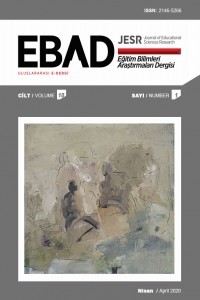Başarının ve başarıdaki artışın dikey ölçekleme ile değerlendirilmesi: dikey ölçekleme yöntemlerinin karşılaştırılması
Madde tepki kuramı, Dikey ölçekleme, Kalibrasyon yöntemleri, Yetenek kestirim yöntemleri, Simülasyon, Yapay veri
Assessment of achievement and growth by vertical scaling: comparison of vertical scaling methods
Item response theory, Vertical scaling, Calibration methods, Proficiency estimation methods, Artificial data,
- Başlangıç: 2011
- Yayıncı: Kürşad YILMAZ
Rahat çalışma alanım soyut matematikten nasıl ayrıldığıma dair
Fen bilimleri öğretmenlerinin öğretim stilleri
H. Coşkun ÇELİK, Samet GÜNDÜZ, Aziz İLHAN
Öğretmenlerin örgüt kültürü ile değişim kapasitesi algıları arasındaki ilişki
Didem KOŞAR, Ali Çağatay KILINÇ, Serkan KOŞAR, Emre ER, Zeki ÖĞDEM
Aylin Albayrak SARI, Hülya KELECIOĞLU
Akademisyenlerin Akademik Yılmazlıklarında Rol Oynayan Faktörler
Ömer KUTLU, Hatice Çiğdem YAVUZ
Hasan Basri MEMDUHOĞLU, Elif KELEŞ
Atölye dersi zaman yönetimi ölçeği geçerlik ve güvenirlik çalışması
